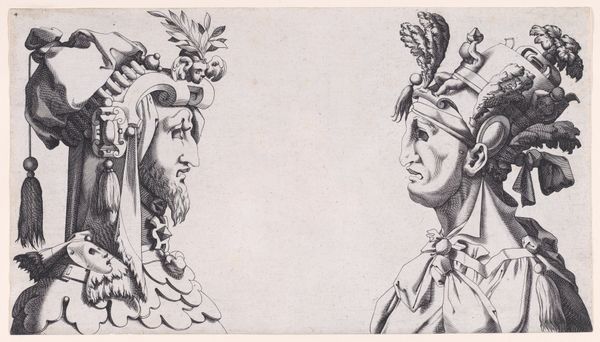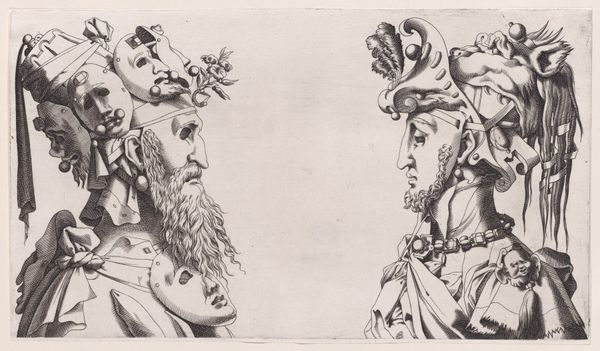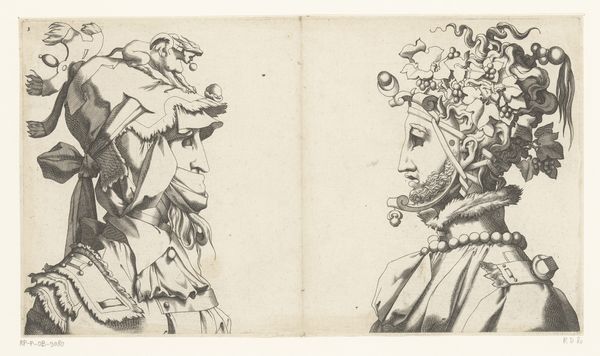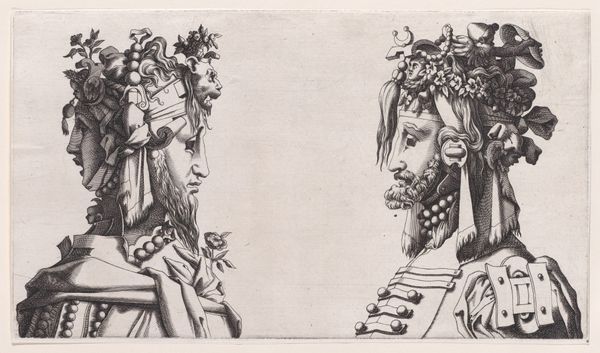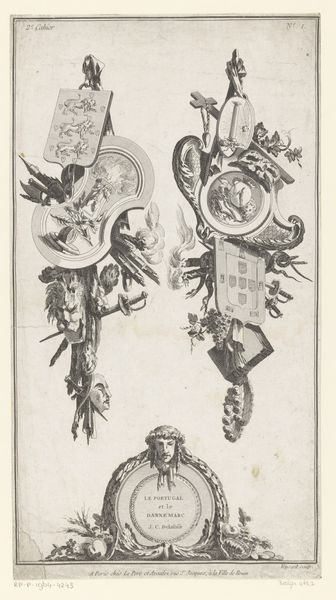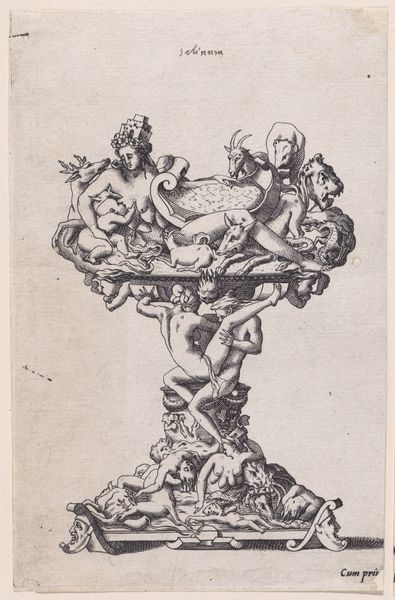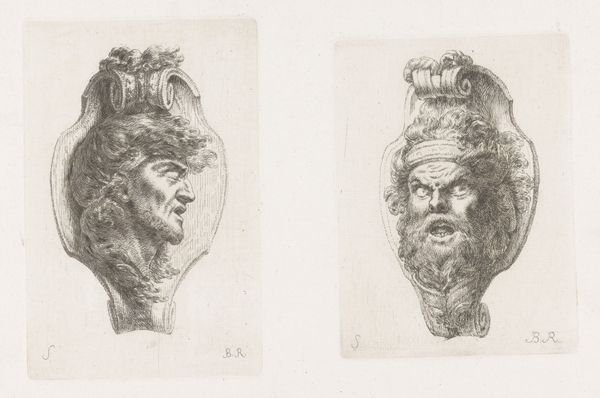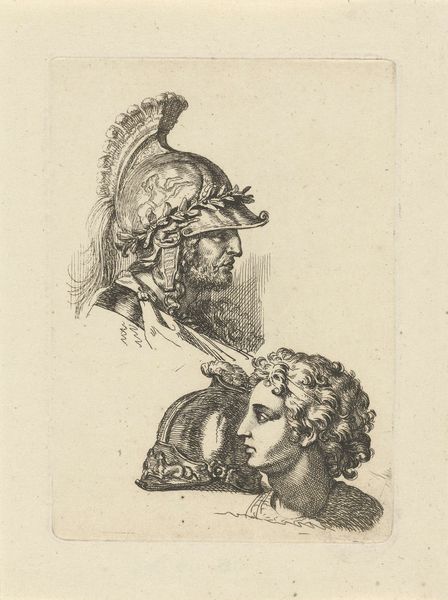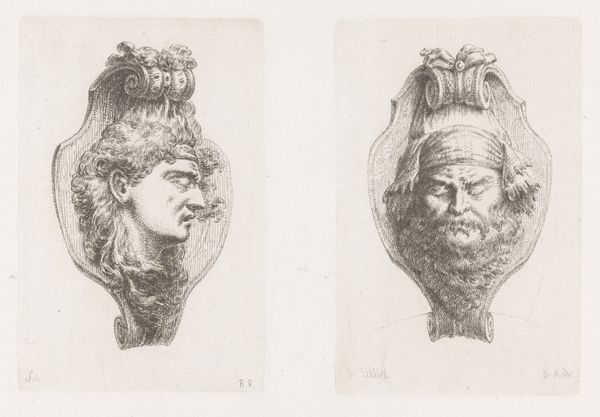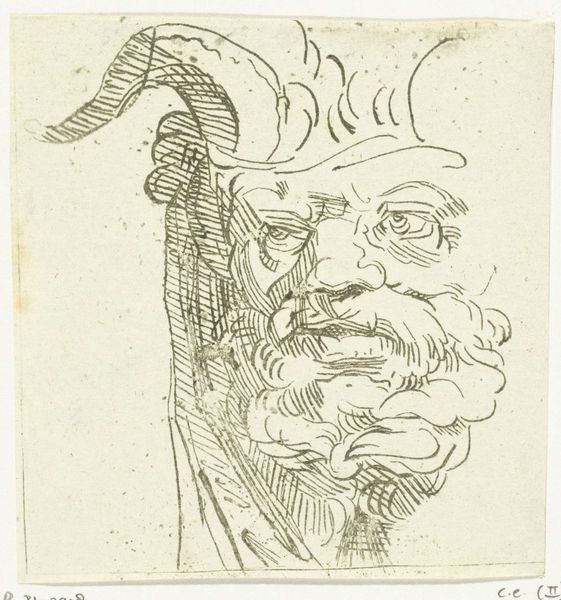
drawing, print, engraving
#
portrait
#
drawing
# print
#
mannerism
#
figuration
#
engraving
Dimensions: sheet: 6 3/16 x 11 in. (15.7 x 28 cm)
Copyright: Public Domain
Editor: Here we have "Fantastical Masked Masculine Heads," a print by René Boyvin, created sometime between 1525 and 1600. The two profiles are incredibly ornate and elaborate. I'm struck by their expressions – one looks so severe and wise, the other almost mischievous. What can you tell me about this pairing? Curator: Well, looking at Boyvin's work through a historical lens, we see Mannerism’s love for artifice. These aren't just portraits; they're carefully constructed displays of status and erudition. Notice the details in their headdresses: what do you make of their contrasting ornamentation? Editor: The left figure’s headdress is more architectural, even mechanical, while the one on the right seems almost...botanical? Is that intentional? Curator: Precisely. Consider the cultural context of the time. The elite competed fiercely for social standing. Their clothing, accessories, and, by extension, representations of themselves became elaborate signifiers. Prints like these were not merely decorative; they actively participated in this game of one-upmanship. Does knowing that change your interpretation of their expressions? Editor: It does. The mischievous figure, adorned with foliage and fruit, maybe flaunting worldly pleasures? While the serious, more mechanical figure projects intellectual dominance? Curator: That’s insightful! Prints like these also circulated widely, disseminating ideals and aspirations of the powerful. By reproducing and sharing these images, Boyvin played a role in shaping contemporary values. How might that have impacted a wider public? Editor: I see. So, this print isn't just a historical snapshot; it’s an active participant in its own cultural moment. Curator: Exactly. Analyzing it unveils how visual imagery performs social work. Understanding this reframes the artwork as a social actor, a tool of communication within early modern society. Editor: This print definitely contains a lot more layers than I initially thought. It's really interesting to consider it in this light, as a socio-political statement of sorts. Curator: Indeed, understanding art as a product and shaper of culture changes the way we appreciate even seemingly simple images.
Comments
No comments
Be the first to comment and join the conversation on the ultimate creative platform.
